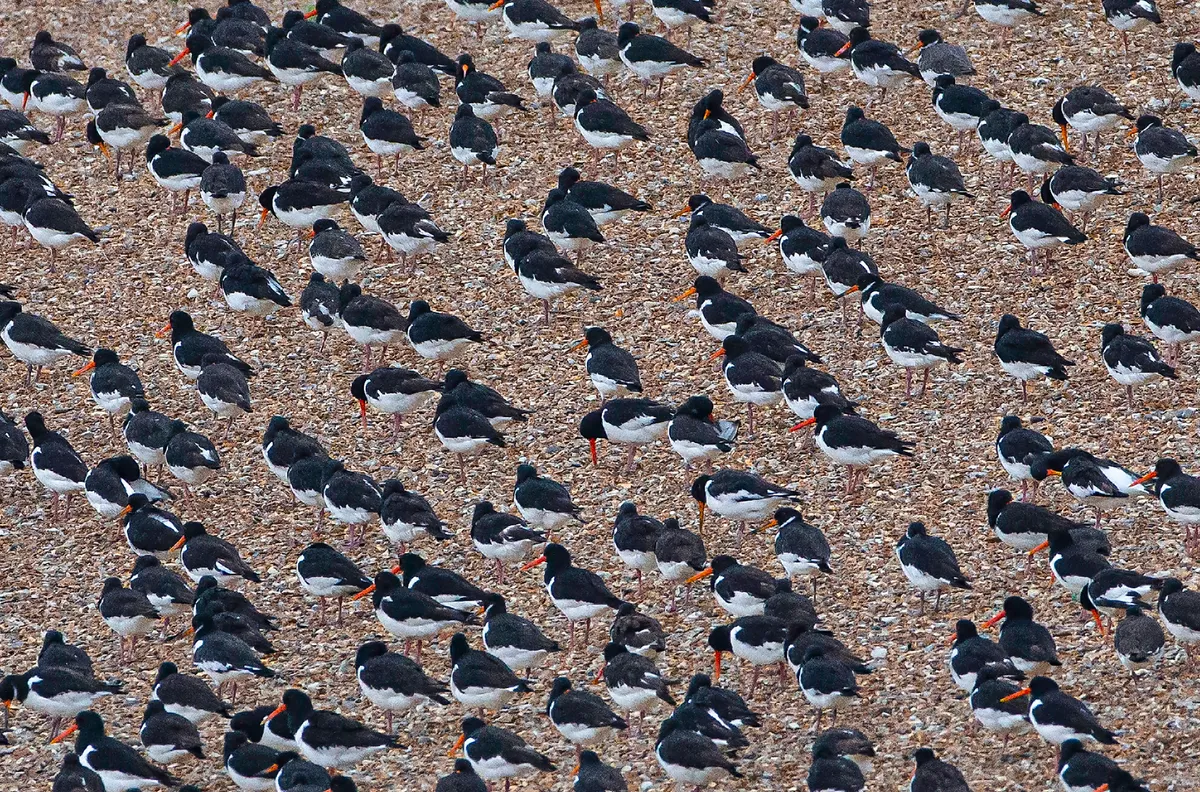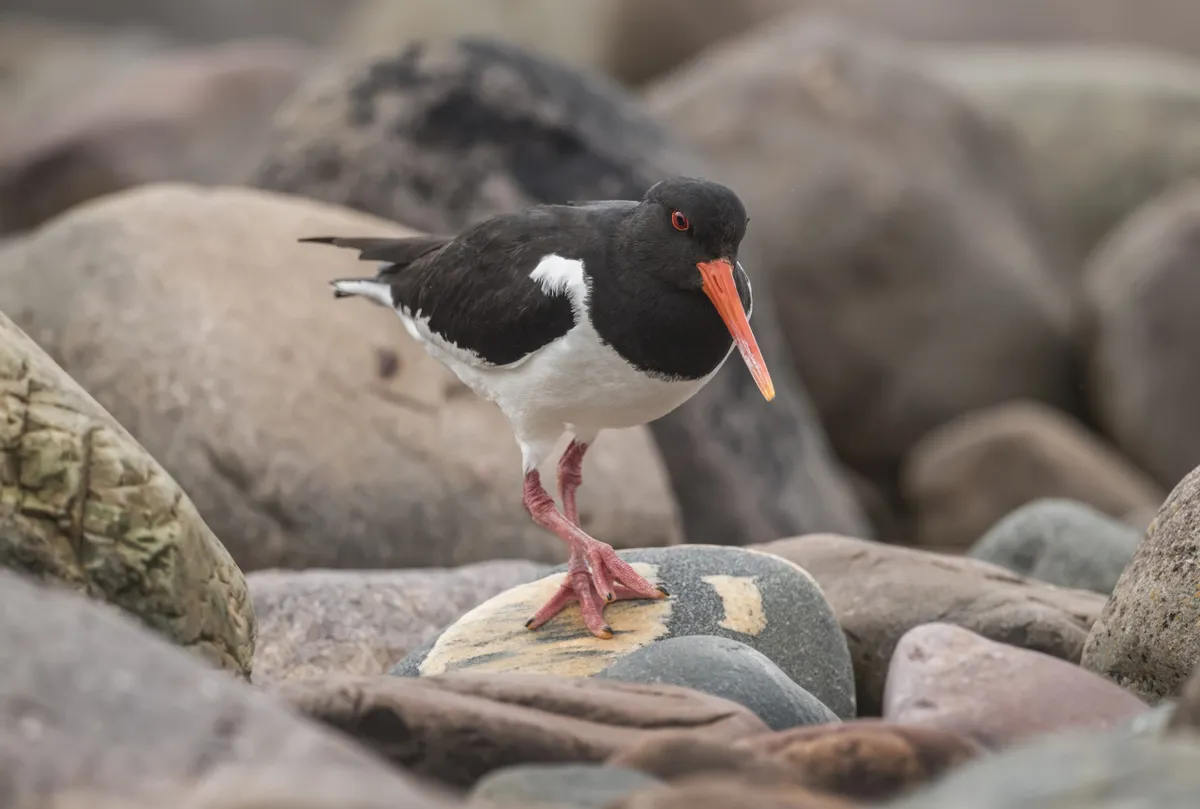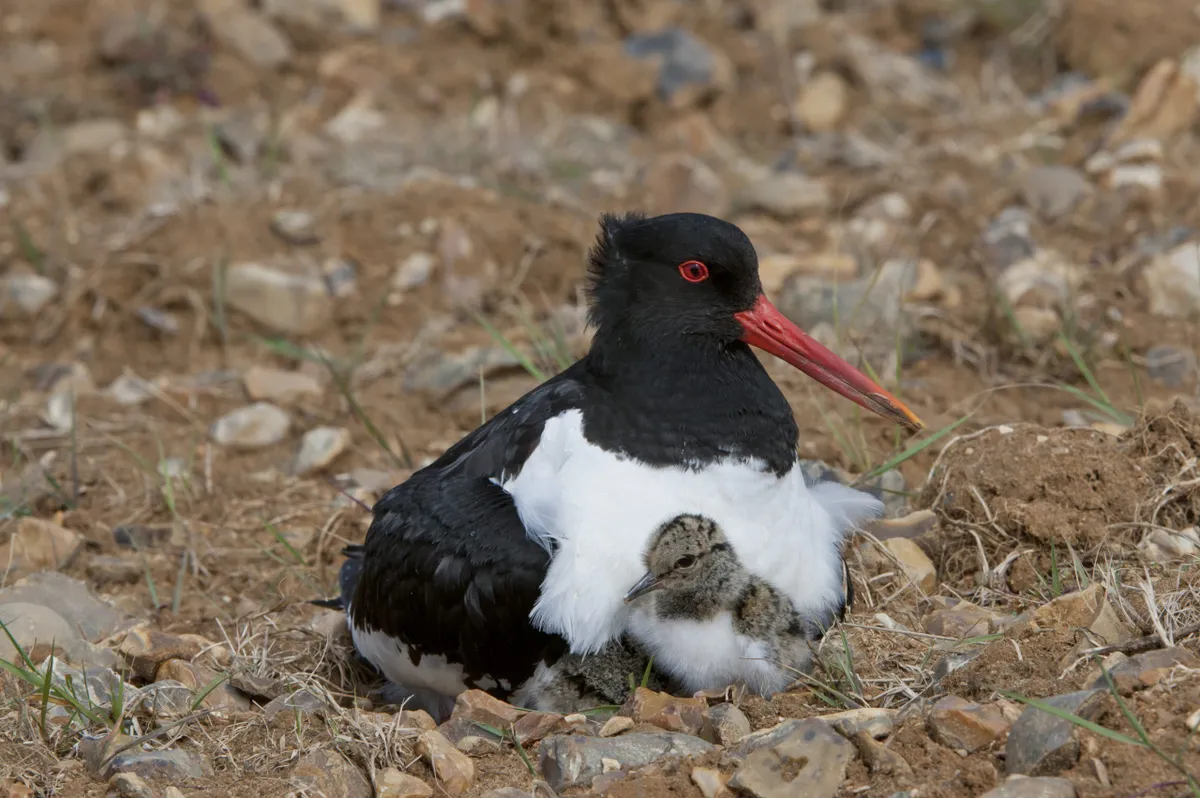There is little apparently sophisticated or ‘hidden’ about an oystercatcher. It’s a black-and-white bird with a gaudy orange bill and strident voice. It makes its living smashing the living daylights out of unfortunate molluscs. However, there is indeed a subtle and surprising side to an oystercatcher, and it is related to its diet.
On the shore, the oystercatcher picks its way through a host of invertebrates that do their best not to be on anyone’s menu – sealing themselves into their shells between being submerged by the tides. The oystercatcher, however, is a specialist at extracting them, and here is where things get interesting.

Watch these birds and you’ll notice how differently individuals tackle the problems presented to them by their prey – whether it’s prizing cockles from mud, picking at winkles or smashing mussels from their beds. There are at least three ways of feeding – the stabbers, chisellers and hammerers – and each technique corresponds with a specialisation in the birds’ hardware.
Muggers of the mudflats
They may have the heaviest, most solid, efficient-looking bill of all British wading birds, but oystercatchers are not above a bit of skulduggery to procure themselves a meal. Studies show that up to 60 per cent of oystercatchers’ diets are made up of food stolen from other oystercatchers, by threatening and harassing them until they give up their prey. They really are the yobs of the shoreline. Perhaps they deserve the abbreviated title ‘Oyc’ (phonetically ‘Oik’) given to them by birders!
Did you know?
Oystercatchers can be right- or left-handed with their bill, striking to the left or to the right.
Stabbers have a laterally compressed bill. They pick at worms, but when dealing with mussels and cockles are able to get their bill tips in between the valves, and, by twisting sideways, lever the two shells apart. They then use their bill like a pair of scissors to slice through the adductor muscle (the powerful muscle that holds a shell closed). Job done.

The hammerers are less subtle, and you can hear them hard at work, attacking limpets and mussels. But these birds fall into two other distinct feeding specialisms – you’ll have to watch them very carefully to spot the difference.
Muggers of the mudflats
They may have the heaviest, most solid, efficient-looking bill of all British wading birds, but oystercatchers are not above a bit of skulduggery to procure themselves a meal.
Studies show that up to 60 per cent of oystercatchers’ diets are made up of food stolen from other oystercatchers, by threatening and harassing them until they give up their prey. They really are the yobs of the shoreline. Perhaps they deserve the abbreviated title ‘Oyc’ (phonetically ‘Oik’) given to them by birders!
Ventral hammerers tend to remove a mussel and then wedge it, so that the top edge of the shell is upwards. They then set about battering their way into the weaker parts of the shell, making a hole that enables them to target the adductor muscle. These birds have chisel-shaped bills.
Dorsal hammerers are even less delicate and simply smash at the area of the shell where the big adductor muscle is located, which is nearer the hinge of the two shells. Not surprisingly, the bill shape of these birds is heavy and blunt – a tool with which to bludgeon your way in.
Adapting to the situation
As you might expect, the bill of an oystercatcher is subjected to a lot of wear and tear. However, this is counteracted by the speed with which the bill grows – 0.4mm a day (several times faster than a human fingernail).

Because of this, these shorebirds demonstrate an ability to swap around techniques depending on what food is available. So, while they have specialities at any given moment, they’re not completely committed, something known as resource polymorphism. This flexibility provides options.
Let’s say an oystercatcher moves habitats, leaving the rocky shore to fly inland. In doing so, it has to develop a more delicate picking technique, to find earthworms on a golf course, for example. You might think that it would be at a disadvantage. Well, it might for a few days but after changing its food-finding modus operandi, its bill becomes honed to match the task required. Our oystercatcher has developed the perfect bill for the job.
